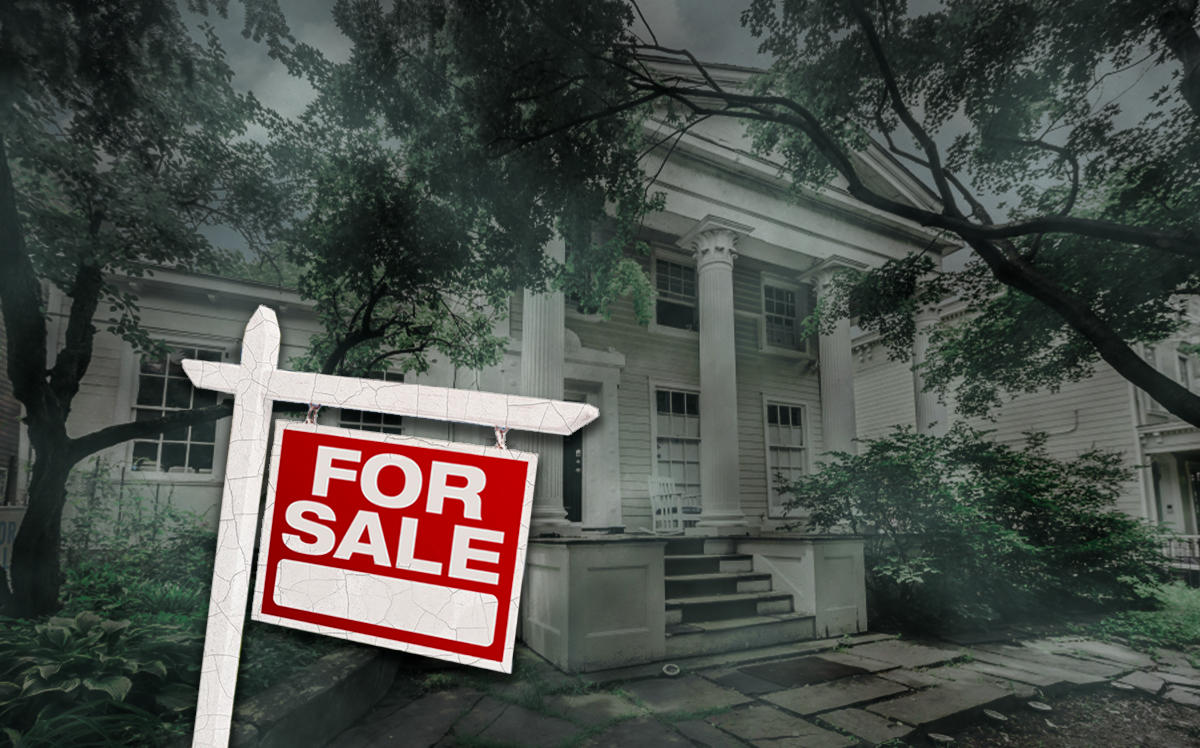Compass agent Micha Hendel wants the record set straight: The listing at 136 Clinton Avenue isn’t haunted. Ever since the current owners bought it in 1996, no poltergeists, ghouls, or other-worldly characters have materialized on the historic Clinton Hill property — a Greek Revival constructed in the early 1830s that’s currently on the market for $3.6 million.
Still, once rumors of hauntings get out, they can be tough to escape. In this case, the lore dates back 140 years. The New York Times ran a series of articles about ghostly happenings at the Clinton Avenue address in early December 1878. In the coverage, some sources attributed the apparitions to a suicide that took place in the house while others claimed it was Satan himself paying a visit.
Thanks in part to the Times digitized archive, 136 Clinton continues cropping up on lists of New York City’s most haunted places to this day. As Faulkner put it: The past isn’t dead. It isn’t even past.
In such highly documented — and easily googled — instances, the onus is on the agent to broach the circumstances with prospective buyers.
“I have to provide clients with the same information they can find online,” said James Gibbs, a Keller Williams agent based in Manhattan. In 2017, he had the listing on the Kreischer Mansion, a landmarked home on Staten Island.
“As a licensed professional you are obligated to alert any client that there was a death on the property,” Gibbs said, adding that it depends on the circumstances, including how recently the the person expired. “You are not obligated to go into details as to what happened.”
Constructed in the mid-1880s, the house has sat largely uninhabited for many years. It’s allegedly haunted by the ghost of its original owner and a former chef who was said to have been murdered for his affair with said owner’s wife.
The property is also the site of a documented mob hit. A body may be buried somewhere on the grounds, but no one’s scrambling to excavate, according to Gibbs.
It’s hard not to be freaked out by some aspects of the house, the agent conceded. At 4,500-square-feet, it’s huge, old, empty, and it basically looks like a Victorian set for American Horror Story — all which makes it tricky to market to potential buyers.
“It’s ridiculously hard to sell a haunted house,” Gibbs said. “It’s unsettling to everyone, unless you’re a morbid personality that’s into those things, which most people aren’t.”
Diffusing the situation
The trick is to walk the line between acknowledging the property’s history and shutting down speculation that the rumors are rooted in anything real. Gibbs has said to potential buyers that, “In my experience of selling this home, I haven’t experienced any paranormal activity.” Not quite the same thing as saying it isn’t scary.
In some cases, “haunted” properties fall into an industry category known as psychologically impacted or stigmatized.
States have varying laws governing the requirements about what agents are required to disclose. Gibbs’ approach — keeping things relatively lighthearted — is one way to handle rumors or downplaying a checkered past. Under certain circumstances, you might even call in the real-life ghostbusters.
But, as both Hendel and Gibbs explained, the “haunted” part of selling a creaky old house isn’t even the half of it. If a property is landmarked — as both the Kreischer Mansion and 136 Clinton are — they can’t be bulldozed, and renovation plans must often be approved by the local municipality. Depending on the specifics of the property and its current condition, updating a historic home can be daunting in terms of both time and money spent.
In the case of the Kreischer Mansion, Gibbs estimated that fixing the porch alone could cost hundreds of thousands of dollars. Further complicating matters are its ties to the mob and its location next to a gun range next door.
The Clinton Avenue property, on the other hand, is an updated home in the coveted Clinton Hill neighborhood. Even still, finding a buyer who wants to invest in a historic property like that one can be challenging.
“It’s hard to sell a property like this,” Hendel said, brushing aside any supernatural associations. “Spooky, haunted: These things are in the eye of the beholder.”
Paranormal activity everywhere
Another real estate reality: It’s impossible to avoid the history in the buildings we inhabit and the ground beneath our feet, some of which is more hallowed or haunted than others.
In 2017, the most expensive unit in the condo building that replaced St. Vincent’s Hospital closed for $40 million. Some might consider it macabre for a luxury development to be built at the site of an epicenter of the AIDs epidemic. Others might chalk it up to housing demand. As Gibbs put it, “People want to live in areas of the city because of the location, and [that history] doesn’t really sway people’s desire to buy or rent in a location like that.”
Sometimes, a little bit of spookiness comes with some very compelling benefits. Gibbs has rented a number of apartments at 780 Riverside Drive, across the street from Trinity Church Cemetery and Mausoleum.
“People actually find it appealing — it’s a piece of history, it’s well maintained, it’s part of the community.” Plus, there’s a lot to be said for quiet neighbors, he added, with a laugh. “They really are the best neighbors in the world.”
